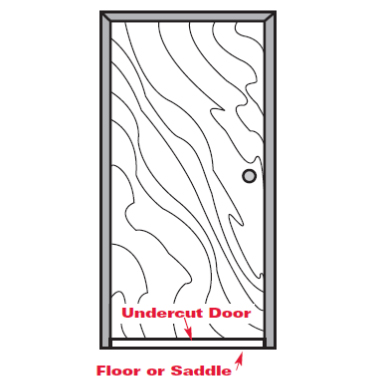For acoustical gasketing to be effective at blocking sound, the seals around the head, jamb and sill must be complete, uninterrupted and air-tight throughout the service life of the door. For uninterrupted contact, the gasketing must be installed all on the same side of the door and frame. Performance also depends on good surface contact between the gasket and door edge or frame, which can usually be achieved using compression seals.
However, gaps caused by imperfect door alignment are a common problem in newly installed gasketing and can also surface later on as buildings shift and settle and doors cycle through changes in temperature and humidity. For consistent performance over time, the most advanced acoustical gasketing is designed with adjustable features to restore a sound-tight seal when clearances increase for any reason.
As with the door itself, the mass of the sealing material used in acoustical gasketing is a major factor in achieving a high STC rating. Combining complementary materials can also provide better performance. In addition, air trapped in a "sound lock" between a pair of doors, or between layered sets of seals in a gasket, is one of the best sound absorbers.
Ultimately, the quality of the acoustical gasketing is the biggest factor in overcoming any installation deficiencies and determining how close the actual sound performance of an assembly will come to the published rating of the door. Improving the quality of the gasketing brings the STC value of the functioning opening closer to its theoretical maximum.
It is important to understand that STC values are not proportionate units of measurement. To continue reducing sound transmission–that is, to achieve increasingly higher levels of sound control–each 10 dB increment requires ten times as much improvement as the one before. While door openings rated in the range from STC 30 to STC 40 are common, achieving STC 50 and higher ratings is extraordinarily difficult.





